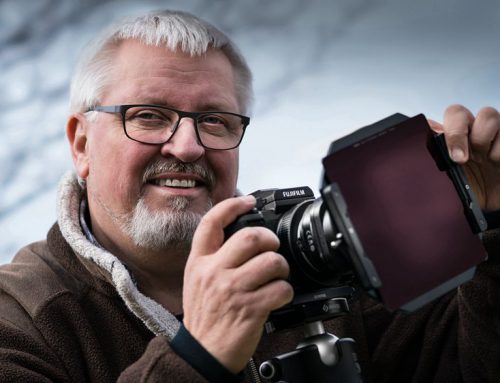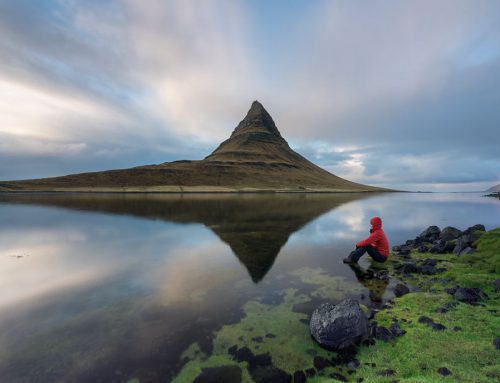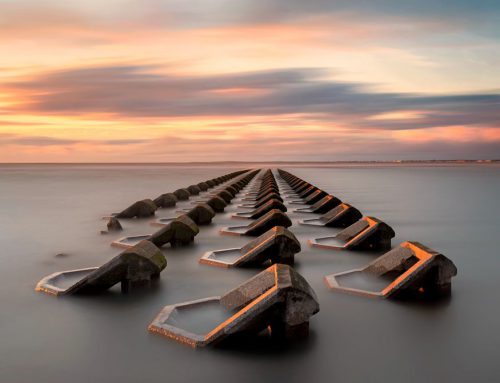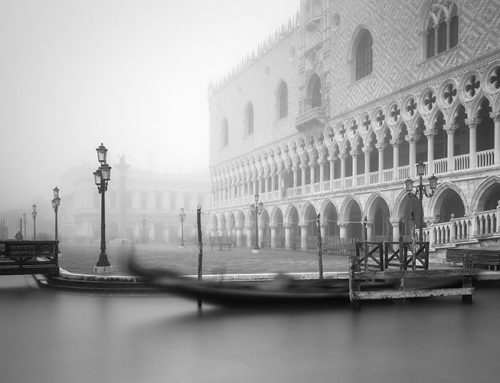Slovenian born Beno Saradzic is a specialist photographer and filmmaker with a residence in Dubai, UAE. For nearly 20 years as a professional 3D Visualizer, Beno has trained his eye in the ‘art of seeing’. His body of work is defined by his profound love for architecture, engineering, science and the beauty of nature.

Beno has won numerous international accolades in the field of photography, time-lapse cinematography and film production, including the Emmy Nomination in 2014 for his achievements in the BBC’s ‘Wild Arabia’ TV series. And he is an official Fujifilm Brand Ambassador as well as a Brand Ambassador of NiSi, 500px and Timelapse. It’s an excellent chance for NiSi to learn his views about photography and art in this interview.
Z for Zoe and B for Beno
Z: Hi Beno, it’s an honor to talk with you! Firstly, could you tell us three interesting things about you that you want people to know?
B: I speak 5 languages and a fluent sign language; I learned it from both my parents who are deaf.
I’m ambidextrous which means I can use both hands equally well. On the downside, I can never decide which eye to use to look through the camera’s viewfinder.
I’m a huge fan of science fiction, movies classics, the art of cinematography as well as classical painting. I love the beauty of nature. This is where I draw most of inspiration for my own work.

Taken in Slovenia
Lake Bohinj is the largest, deepest and oldest glacial lake in my home country Slovenia, surrounded by spectacular nature in a protected national park. Fall is such a splendid time for landscape photography and I’ve been meaning to shoot from this spot for a long time. I used a 3-stop Medium Grad ND and a CPL which helped me to capture this magical spot.
Z: How did you become interested in visual arts? What made you switch from a 3D computer graphics artist to a photographer?
B: I’ve had an affinity for fine arts all my life though I started exploring creativity only in my late 20s through 3D computer generated arts. I was a professional visualization artist for nearly 20 years. I worked with architects, interior and industrial designers, bringing their ideas and visions to life with the use of photo-realistic computer renderings. It was a field which enabled me to apply both of my strengths: my love for arts and knowledge of computer science. But my profession was closely related to economic development of the country which hosted me, the UAE. In 2008 and 2009, things slowed down dramatically all over the world. Construction companies and real estate developers were badly hit, and my clients evaporated virtually overnight. The work had all but stopped and it became hard to generate income my field. About the same time, I started experimenting with photography, which was only a hobby at the time. The transition to full-time, professional photography and time-lapse cinematography was quite dramatic for me, and very swift.
Luckily for me, the lessons acquired as a veteran 3D visualization artist translated extremely well into the art of photography. I was mostly ready from the creative aspect of photography. All I needed to learn was how to operate a camera and many other accessories needed in this field. I knew how the composition and depth-of-field worked; I had a very good understanding of colour science. I was also familiar with various focal lengths and how they affected the image and spatial relationships. As a 3D artist, I always utilized the power of perspective, the power and direction of light and shadows. But there are the things I learned as a visualization artist which were truly priceless; I was able to create drama, tension and tell stories with the use of visual language. I knew what makes a good-looking image. It also taught me how to make seamless composites. These skills have later proven to be invaluable assets in my commercial photography.

Taken in Dubai
Dubai Marina hosts ‘The Tallest Block in the World’. There are more towers higher than 300 meters per square kilometer in this location than anywhere in the world. I was waiting for the right time to take this picture, at the moment when the sun hit the center of the image. I used a 15-stop ND filter to create a very long and surreal looking exposure.
Z: 3D graphics, photo, and video, what do these medium mean to you?
B: Ability to create art is what distinguishes humans from other animals. That’s why we have music, sculptures, paintings, beautiful buildings and bridges, gourmet cuisine, complex cocktails, poetry, books and films. Art is quite literally a human DNA.
But I don’t think a person gets to choose to be an artist, just like he can’t choose to be a genius mathematician; it simply doesn’t work this way. My art represents my own voice, my true calling which fulfills me on a deeply personal level. It goes far beyond the means of generating income. I think that we all seek to express ourselves, our individuality in some way. We seek validation for existence in this world and subconsciously attempt to leave a mark in time; something to be remembered by. A body of work. When we take a picture, we are saying “this is my capture. That’s what I did. That was me. I was here.” You know what mean?

Taken in Bon Echo Provincial Park, Ontario, Canada
I waited for the late afternoon light to hit the side of the majestic rock face in the middle of the lake. I used a 10-stop ND filter to smoothen the surface of the water, a CPL to increase colour contrast and a 3-stop Medium Grad ND filter for better control of the brightness in the upper half of the image.
Z: You’ve tried many different types of photography, which do you find the most challenging?
B: The most challenging thing about photography is not the photography itself. You can master it after just a few years of intense practice. But once you reach a good level of competency, you will realize that it’s much harder to progress from there. I look at my own work from 5 years ago and I don’t think that I’m significantly better today.
The most challenging thing about photography, or time-lapse cinematography, is finding your own signature, instantly recognizable style. The type of work which turns heads and stars conversations. The kind of work which breaks through the ice of the accepted norms, heading bravely into uncharted new territories. There are so many photographers out there today, but very few of them produce work which stands out for its originality. Photography, like all other forms of art, is derivative. Art imitates itself, from one person to another, through thousands of iterations, until something new emerges. Only a few photographers will ever claim this ultimate prize. We all try to be that person, myself including.

Taken in Plitvice National Park, Croatia
Plitvice National Park is one of the most amazing natural sights in the world. I found this perfect spot to capture the series of small waterfalls hiding within the lush greenery and a complex of emerald lakes. A 10-stop ND filter was used to change the appearance of the water, combined with a CPL which saturated the colours and darkened the sky.
Z: When did you start using NiSi filters and why?
B: It was almost 3 years ago. I was offered to try out NiSi products without obligation. It took just one shooting session and a few pictures for me to realize that this brand takes their business seriously.
Here the thing; I’ve been using filters from the day I started taking pictures. I tried infrared photography with IR 720nm filters, circular polarizers, UV filters, daylight filters, ND filters, Variable ND filters and Gradient ND filters. I always loved to experiment and use filters and that’s because they took my photography to places where ‘naked’ lenses couldn’t go. It was a place where photography crossed the line and ventured into the world of fine art. Filters gave my work a distinctive look and forced me to think creatively. But using them wasn’t always a pleasure. Poorly manufactured filter holders leaked light, causing all sorts of unwanted image artifacts. Some of the holders were made from cheap plastic and would flex, along with filters which used to slide out, drop on the ground and break. As for the filters themselves; most of them produced colour tint which was hard to remove in post-production. They were easy to scratch and break. Quite frankly, filters were always the weakest part of my photography kit.
On the other hand, NiSi created a truly superior line of products, custom tailored to fit on the most popular or the most exotic lenses from all major camera brands. NiSi filter holders are made from CNC machined, anodized aluminum. They are precision engineered, premium-feel products, and their quality is instantly apparent. Same applies for their filters. They are made from top-notch optical glass, the same type used to make top quality lenses. They are coated with their proprietary, high-tech nanolayered coatings. That’s not just marketing talk but engineering solution which is there for a good reason. The end result is the filters which polarize light, reduce the amount of light or alter their wavelength, all for the benefit of the photographer. But what these filters do NOT do, is degrade the quality of your images with unwanted colour shifts or vignette. The reason why I use NiSi filters is that I’m happy with the quality of their products, plain and simple. Their tech and sales support are also exceptional and that’s another good reason to remain loyal to this brand.

Taken in Slovenia
Tolmin Gorge in Slovenia was carved by Tolminka and Zadlascica rivers. The gorge is 60 meters deep so it’s very rare to see it illuminated by the sun. I waited patiently for this moment. I used a 6-stop ND filter combined with a CPL to capture this magical scene.
Z: Which NiSi products do you usually use in your work?
B: I use pretty much all their products, depending on the type of subject I’m photographing. For architecture, I like to use CPL filters to darken the sky around the building which also makes it pop from the scene, creating depth and impact. I usually add ND filters too (8 stops or more). They help to extend exposure times which is useful for blurring out any moving or distracting objects in the foreground, or to make them disappear altogether. This is great for photography of buildings from the eye-level during the daytime with heavy traffic in front of them which is a very common scenario in any city.
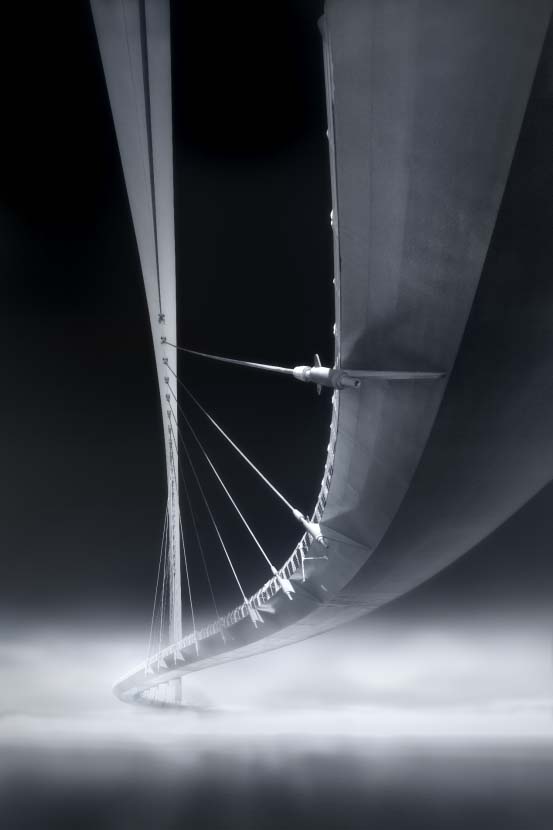
Taken in Dubai
Tolerance Bridge crosses the man-made canal which effectively split the heart of Dubai from the mainland. I used my favourite lens to shoot this architecture: the amazing Canon TS-E 17mm f/4L lens, fit with NiSi S5 150mm filter holder made especially for this exotic lens. I used a 10-stop ND filter and a CPL to create the dramatic mood I was looking for.
When I’m shooting time lapses, I use low-powered ND filters (3 to 6 stops) in order to introduce a slight motion blur on the walking people or moving cars during the bright daylight. I usually combine them with Medium Grad ND filters (3 stops) to control the brightness in the sky, for toning down the overexposed clouds and the sun itself.

Taken in Dubai
I rarely shoot Dubai skyline from this location because it can only be observed from private property. It’s also very rare to see such beautiful clouds in Dubai where the sky is mainly cloudless. I captured an extra-wide panorama by stitching 2 overlapping photos. I used a 3-stop Medium Grad filter and a CPL to control the sky.
At night, I almost always use Natural Night filter because it’s fantastic for controlling yellow glow which comes from light-polluted cities, offsetting all colours into unnatural hues. I found it to be more effective for light pollution control than post-production adjustments.
Z: Among all the photos you took with NiSi filters, which one is your favorite? What went into creating it?
B: One of my favourite pictures taken with NiSi filters has to be the rolling fog over Dubai, photographed from the rooftop of the Princess Tower, the world’s tallest residential tower. The sun was shining directly into the lens and it was extremely bright! I wanted to slow down the shutter speed a bit to give the moving fog a dreamy, painterly look. I used a 10-stop ND filter which did the job extremely well. The sky however was still too bright. To control it, I added a 3-stop Medium Gradient filter. The end result was perfectly exposed, otherworldly scenery of a city from the future.

Taken in Dubai
The rolling fog in Dubai is one of the most wonderful spectacles to witne ss, if you find yourself on the rooftop which is high enough to observe it from the above. I took this shot in Dubai Marina at sunrise. I used a 10-stop ND filter to extend the shutter speed a bit which gave the fast-moving fog a dreamier feel. And I combined it with a 3-stop Medium Grad ND filter to control the brightness on the top side of the image.
Z: During these years, what is the best professional advice you’ve ever received?
B: Frankly, I haven’t had the opportunity to be surrounded by experienced photographers when I was starting out. What I’ve learned, came from my own experiments and repeated failings. Some of those were quite costly too. The biggest lesson I’ve gathered in the past 10 years of photography is that the gear will never make you a better photographer. It will only slow you down. What matters the most is the photographer, his eye, his skill, his patience, his hard work. It’s really all about the photographer… but having the right gear, good quality gear, helps.
The second lesson is the sin we’re all guilty of; comparing ourselves with others, feeling jealousy and our own inferiority. Remember what I said earlier about finding your own, unique style and how important that is? You’ll never find yourself if you continue looking over the fence to see what the neighbor is doing. Do your thing, stay the course and stick with it, no matter how long it takes. It’s the only way to become fulfilled as a photographic artist.
Z: What excites you the most about the future of photography? What do you find the most troubling?
B: We are in the future of photography already and have been in it for a while. We can refocus and change the depth-of-field of pictures after we’ve taken them. We’ve crossed the crazy 8k resolution barrier which would have seemed fiction just 10 years ago. Photos taken with mobiles are almost indistinguishable from those taken with Pro cameras. Billions of pictures are taken every single day. I’m mostly curious about how the seasoned Pro photographers will survive the onslaught of technology fueled by social media platforms. The market is changing in front of their noses. Will they be able to keep up with all the advancements, adapt to the new trends and norms? Will they be able to continue to produce creative work and sustain their profession for a right compensation? Or will they perish in the #hashtag tsunami? Social Media is redefining the whole industry, morphing it beyond recognition. The change is too sudden for most to keep up. My guess is that a big majority of pro and commercial photographers will be purged from the scene, except for those who are willing and able to learn new things. They will have to diversify their portfolio of skills in order to be competitive again. We’re living in a digital revolution and it’s waiting for no one.
Z: What is still on your photographic bucket list?
B: I’d like to win a lottery so that I don’t have to worry about making money with photography. I dislike client pressure, subjects I don’t care about, silly deadlines, ‘creative’ briefs, agencies, budgets and payment kill the very reason why I fell in love with photography. I’d like to take photos without obligations and the need to meet someone’s expectations, against the clock. I’d much rather set my camera on a tripod somewhere by the quiet lake, in the golden hour on a chilly autumn afternoon, in a place I love the most. That would be very high up on my bucket list.


